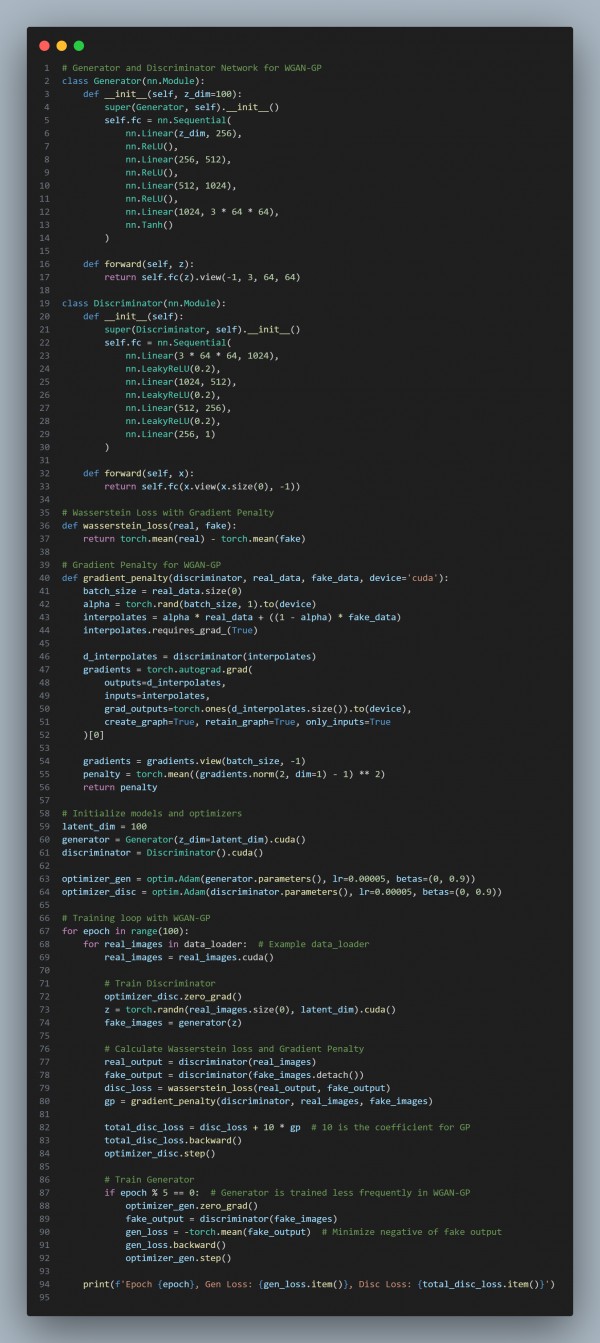To apply novel loss functions in GANs to improve the quality of generated text or images, you can follow the following approaches:
- Perceptual Loss: Measures the difference in high-level features (e.g., from a pre-trained network) rather than pixel-level differences, improving perceptual quality.
- Feature Matching Loss: Ensures that the generated output matches real data in terms of feature space.
- Wasserstein Loss: Uses the Wasserstein distance (Earth Mover’s distance) to improve training stability and reduce mode collapse.
- Adversarial Loss with Gradient Penalty: Helps with stable training by penalizing gradients that are too steep in Wasserstein GANs (WGAN-GP).
- Cycle Consistency Loss: For tasks like image-to-image translation, it ensures that the model can map the generated data back to the original form.
Here are the code snippets you can refer to:

In the above code, we are using the following key points:
- Wasserstein Loss: Reduces mode collapse and improves stability by measuring the Earth Mover's distance between real and generated distributions.
- Gradient Penalty: Regularizes the discriminator to avoid sharp gradients, helping the model converge more smoothly and preventing issues like vanishing gradients.
- Adversarial Training: The generator and discriminator are trained adversarially, with the generator trying to fool the discriminator and the discriminator trying to differentiate real from fake data correctly.
- Stable Training: WGAN-GP encourages more stable GAN training, especially on complex data like high-resolution images.
Hence, by referring to the above, you can apply novel loss functions in GANs to improve the quality of generated text or images.
Related Post: Custom loss function for a GAN
 REGISTER FOR FREE WEBINAR
X
REGISTER FOR FREE WEBINAR
X
 Thank you for registering
Join Edureka Meetup community for 100+ Free Webinars each month
JOIN MEETUP GROUP
Thank you for registering
Join Edureka Meetup community for 100+ Free Webinars each month
JOIN MEETUP GROUP